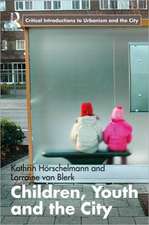Housing in The Netherlands 1900–1940
Autor Donald I. Grinbergen Limba Engleză Paperback – 14 feb 2012
Preț: 385.25 lei
Nou
Puncte Express: 578
Preț estimativ în valută:
73.73€ • 80.06$ • 61.93£
73.73€ • 80.06$ • 61.93£
Carte tipărită la comandă
Livrare economică 23 aprilie-07 mai
Preluare comenzi: 021 569.72.76
Specificații
ISBN-13: 9789401164610
ISBN-10: 9401164614
Pagini: 148
Ilustrații: 144 p.
Dimensiuni: 210 x 280 x 8 mm
Greutate: 0.35 kg
Ediția:Softcover reprint of the original 1st ed. 1982
Editura: SPRINGER NETHERLANDS
Colecția Springer
Locul publicării:Dordrecht, Netherlands
ISBN-10: 9401164614
Pagini: 148
Ilustrații: 144 p.
Dimensiuni: 210 x 280 x 8 mm
Greutate: 0.35 kg
Ediția:Softcover reprint of the original 1st ed. 1982
Editura: SPRINGER NETHERLANDS
Colecția Springer
Locul publicării:Dordrecht, Netherlands
Public țintă
ResearchCuprins
1. Introduction.- 2. The pre-industrial period.- Spatial openness.- The town/country dichotomy.- The street and the dwelling.- The hofje.- 3. Industrialization and urbanization.- 4. Housing production before 1900.- Industrial housing.- Speculative housing.- Housing associations.- Agneta Park.- 5. Dwelling conditions before 1900.- Rural poverty.- The typical row house.- Hand-me-down housing.- Back-to-back dwellings.- The closed block: double exposure flats.- Cupboard beds and alcoves.- 6. The housing act of 1902.- Municipal regulation before the Act.- National reform precedents.- The Act: building regulations.- The Act: agents of productions.- The Act: city planning.- The context for progress.- 7. The influence of Camillo Sitte.- H.P. Berlage.- J.J.P. Oud.- 8. New role for the architect.- Socialism.- Artist, ego, and universalism.- The dwelling as cultural symbol.- Expressionism and the Amsterdam School.- The Nieuwe Zakelijkheid.- 9. The garden city tradition.- of the tuinstad idea.- Romanticism.- Paternalism.- Utopia and self-sufficiency.- H.P. Berlage.- Polarization and critique.- Influence.- Preliminary tendencies to spatial openness.- 10. Collectivity and communal space.- The influence of hygiene.- The hofje tradition.- Communal garden prototype.- Front and back: Tuinwijk Zuid, Haarlem.- In and out: Spangen, Rotterdam.- J.J.P. Oud.- Symbolism of collectivity.- 11. Standardization.- Crisis.- Berlage and ‘Normalisatie’.- Concrete village: Watergraafsmeer, Amsterdam.- J.J.P. Oud and De Stijl.- The problem of the prototype.- 12. Ideology: ends and means.- De 8.- Union with Opbouw.- 13. The new conception of space.- Orientation and light.- Universal space.- Flexibility.- 14. Spatial openness: high-rise.- The image of America.- Romantic socialism.- Propagation of theimage.- Aesthetic applications.- Rationalization.- Rejection: Commissie voor den Hoogen Bouw.- The Bergpolder Flats, Rotterdam.- The 1934 Competition for Inexpensive Workers’ Dwellings.- Final rejection before the war.- 15. Conclusion.- Notes.- Bibliographical note.











